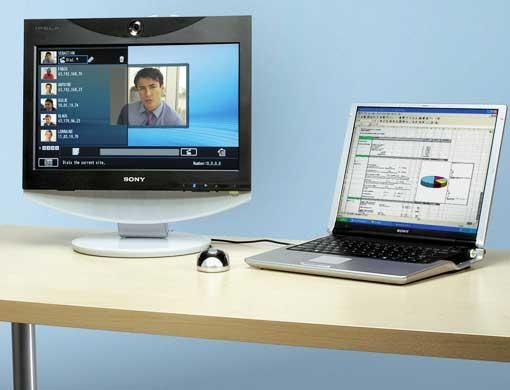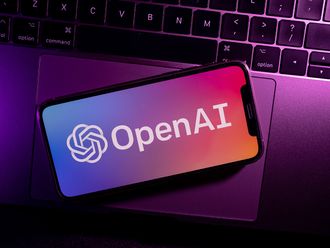Want to attend a class on international relations at a university in Brussels? Need to supervise a surgery in the Czech Republic, or have to conduct overseas interviews for potential employees?
Video conferencing can make all of this possible from your home or office in the UAE - without burning a hole in your pocket, in real time and minus any delay.
Video conferencing has opened new vistas for sectors such as education, medicine and business according to Roger Paine, Managing Director, Video Connections (International) FZ LLC. "For businesses, the need to travel can dramatically reduce and huge savings can be made when using this technology. Decisions can be made more swiftly, communications can be greatly improved, and individuals can feel more involved in their company through the use of video conferencing. In fact, companies as close-apart as Sharjah and Dubai use video conferencing as an alternative to physical travel, as a return trip between Dubai and Sharjah can take four hours to achieve, which is also four hours lost in productivity," says Paine, whose clients range from universities, international banks, petrol and chemical companies, recruitment specialists, healthcare providers and construction companies.
"The management of most engineering and medical institutions now look to video conferencing to enhance students' learning experience and to provide online learning support. Video conferencing makes teachers actively involved in the proceedings and allows students to listen to virtual lectures and seek and receive instant responses to their queries. Video conferencing, in short, has transformed the concept of education by making it so much more convenient," says Vasant Menghani, Managing Director, Touchmate.
Technology talk
So how does this all happen? "Through the transmission of visual and audio signals to enable people in different locations to communicate, as if they were in the same room through the use of cameras, monitors or screens," says Latik Gupta, Deputy General Manager - Corporate Business Division, Jumbo Electronics Co. LLC, which markets Sony's video conferencing solutions for all kinds of applications and environments including the Sony PCSTL and 50 Flagship Sony PCS G70P.
"Today, Gupta says, "The transmission of AV signals is carried through high bandwidth digital networks such as fixed ISDN lines or IP networks that could comprise LAN, WAN or leased lines. The audio and video signals captured by the camera and microphone respectively are compressed at the ‘near' site so it can travel over available bandwidth, and again decompressed at the ‘far' site to provide clear pictures and sound.
High standard
This technology, though, is not new. "Video conferencing technology has been around for about 15-20 years. However, it was not marketed to its full potential during that period. Since then though video conferencing systems have developed to a very high standard with broadcast sound and vision quality," says Paine, whose company supplies and installs Polycom and Sony video and audio conferencing equipment, AV accessories from Pioneer, Panasonic, NEC and Unicol plasma stands and projector/plasma ceiling mounts.
Gupta says a higher bandwidth ensures clear and speedy transmission of audio and video signals, thereby providing the environment of a face-to-face meeting. Participants in such a meeting can also share documents, spreadsheets and images, depending upon the quality of the network links and the equipment used. Video conferencing can be done point-to-point over ISDN, IP or leased lines or multipoint over ISDN, IP, leased lines, VSat or any combination thereof. All VC equipment manufacturers comply with various codec, audio and video standards set by ITU-T (authority for telecom standards) to confirm inter-operability (which means all systems can communicate with each other).
In terms of equipment required for video conference calls, Paine says it is dependent on the size of the meetings to be held. Other factors include the number of people attending the meeting, size of room, purpose of the meetings, and whether documents will be shared, among others.
Basic video conferencing equipment consists of a codec (coder-decoder), a camera and a microphone. "The function of a codec is to compress and decompress audio and video signals so that it can travel over a limited bandwidth available. Camera and microphone transmit audio and video to the far sites. External video monitors (TV, plasma, projectors) with good quality speakers are required to see and hear the far sites and presentation," says Gupta.
Peripherals for video conferencing include multiple ISDN modules; external interface to connect a PC or a video source with video conferencing equipment and an extra microphone and camera, in case video conferencing is being done in large areas. Additional software is available to upgrade basic single point video conferencing equipment to a multipoint unit, enabling it to connect to more than one far site, says Gupta.
According to Paine, video conferencing systems are now user-friendly and no more difficult than your average TV remote control. "The only disadvantage to video conferencing is that you cannot shake the person's hand you are meeting, or catch a cold!"
The advantages are numerous. "While video conferencing is not intended to replace every meeting, replacing 50 per cent of these encounters with video meetings will save your organisation's time and money," says Paine.
It has also become very affordable since both the cost of ownership and the operating costs have come down in the last couple of years to a level where organisations have made policies to have one video conference set-up per conference room. Better QoS (quality of service) being provided by telecom service providers has also made video conferencing as simple and fast as dialling a normal telephone, says Gupta.
New era
Gupta also says that with most countries legalising VOIP, video conferencing is set to enter a new era of personal and business communication. With reducing internet tariff and IT gaining entry into every household, video conferencing has great potential to replace conventional communication systems such as a telephone, messaging service or voice chat.
EXPERTSPEAK
Making the right choice
Video conferencing can be done point to point over ISDN, IP or leased lines or for a multipoint video conferencing over ISDN, IP, leased lines, V-sat or any combination thereof.
There are three main types of systems - desktop, set-tops, and integrated systems:
Desktop-based VC: This form of video-conferencing has recently enjoyed rapid growth and is designed for use by individuals, as a small screen on the desk is used. This form of video conferencing is also available on laptops which provide a mobile communication platform, and is generally done on the internet or private networks. Desktop-based video conferencing is also an effective medium for distance learning programmes.
Set-top VC: These systems are usually used for small groups of people. They provide a high quality visual and audio meeting facility, which can be enhanced with the use of additional presentation equipment. Generally done in small to medium enterprises, for inter-office meetings and video conferencing studio rentals.
Integrated VC: These are video conferencing systems that are generally built into larger rooms, such as boardrooms and conference rooms. They are a highly professional communication facility and can provide a variety of presentation displays, depending upon the equipment used. Typically, they are used for groups of ten or more people. This type of video-conferencing is for large corporates and MNCs, which have multi-location offices or manufacturing facilities; and also for education and medical applications.
All of these different types of video conferencing units and systems can link to each other, to provide a variety of mediums for people to communicate, either within an organisation or externally.
- Information Courtesy: Latik Gupta, Deputy GeneralManager-Corporate Business Division, Jumbo Electronics Co. LLC.











